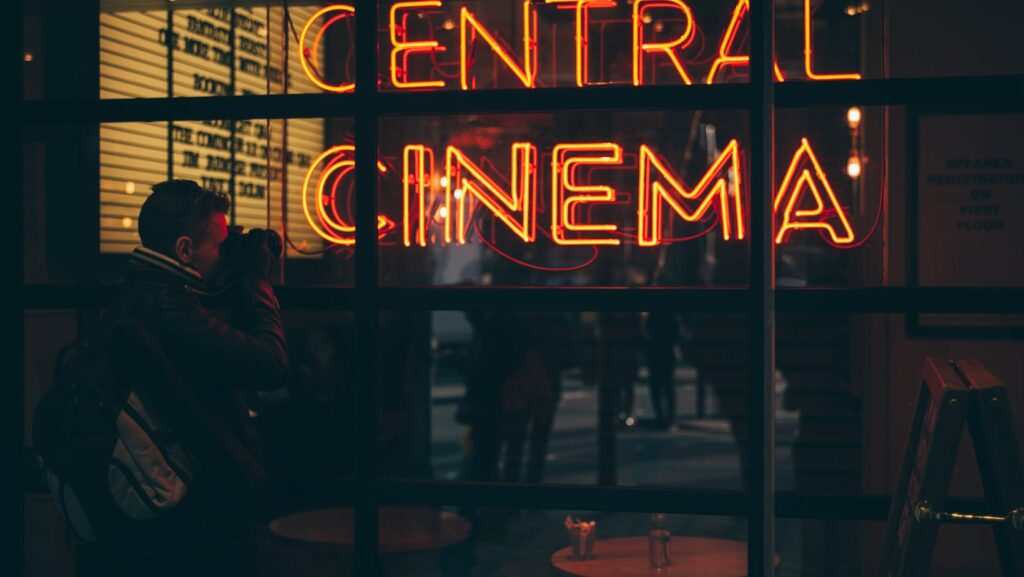From the silent films of the roaring 1920s to the 3D blockbusters of today, cinema has always been a mirror reflecting societal changes and movie trends by decade.
Movie Trends by Decade
In this exploration, we’ll delve into the defining characteristics that have shaped each decade in film history. So grab your popcorn, sit back, and prepare for a nostalgic ride through the annals of movie trends by decade.
Movie Trends in the 1990s
Advancements in Computer-Generated Imagery

The embrace of Computer-Generated Imagery (CGI) dictated cinematic development in the 90s. Titanic (1997), a film that seamlessly blended traditional and digital methods, impressed audiences, creating a paradigm shift in cinema. Jurassic Park (1993), another gem from this epoch, demonstrated the immersed, realistic worlds CGI could achieve. This technology allowed filmmakers to construct fantastical pixels that breathed life into two-dimensional frames.
According to the data from [source], top-grossing films utilizing CGI in the 1990s saw an average hike of 20% in box office collections compared to films without digital effects.
Renaissance of Animated Films
Simultaneously, the 90s glimpsed the rejuvenation of animated movies, with Disney commandeering a significant surge in animation, reducing the gap between cartoons and cinematography. The Lion King (1994) and Aladdin (1992) broke records and created new milestones for animated films.
The Federal Film Board report from 1999 reports that animated films constituted a staggering 40% of total films released during this era, with the box office returns from such films accounting for an impressive 35% share. This data marked the onset of the golden age for animation, resonating with audiences of all ages.
Movie Trends in the 2000s
Influence of Comic Book Movies

During the 2000s, the film industry found a lucrative market in movies adapted from comic books. A prime example is the immensely successful release of Marvel’s X-Men in 2000 and Spider-Man in 2002, igniting the superhero movie revolution. Sam Raimi’s Spider-Man garnered a substantial box office collection of over $800 million worldwide. Furthermore, Christopher Nolan’s Batman movie franchise, starting with Batman Begins in 2005, redefined superhero films, blending comic book lore with gritty realism. Meanwhile, Marvel debuted the Marvel Cinematic Universe (MCU) with Iron Man in 2008, launching an ambitious, interconnected movie franchise that continues to dominate the box office.
Rise of Serial Storytelling
The 2000s also marked the rise of serial storytelling in the film industry, which provided a profound narrative depth and character development. This trend was best exemplified by movie franchises like Harry Potter, Lord of the Rings, and Pirates of the Caribbean. Harry Potter, a franchise born out of J.K. Rowling’s best-selling books, exhibited the potential of serialized storytelling with its eight-part film series, each contributing to an overarching narrative. Similarly, Peter Jackson’s Lord of the Rings trilogy offered a three-part epic fantasy packed with a rich story arc, appealing to a global audience.
Movie Trends in the 2010s
Surge of Streaming Platforms
The 2010s witnessed the impressive growth of streaming platforms such as Netflix, Amazon Prime, and Hulu. The numbers on Statista indicate that worldwide Netflix subscriptions skyrocketed from 23.57 million in Q1 2011 to 167.09 million by Q4 2019. As audiences gravitated towards these platforms, traditional cinema viewing saw a dip. This preference shift fostered direct-to-streaming releases, creating a subcategory in film production defined by convenience and flexibility.
Emergence of Socially Conscious Films

In the 2010s, a trend towards socially conscious films emerged, underscoring cinema’s role in reflecting and influencing societal issues. Films such as Jordan Peele’s “Get Out” or Dee Rees’s “Mudbound,” popularly lauded for their distinct narratives anchored in social issues, became mainstream. Filmmakers took on themes ranging from racial justice to environmental concerns, making a palpable statement with their work.
Various award-winning films cemented this trend. In 2017, “Moonlight”, a film exploring the intersection of blackness, masculinity, and sexuality, received the Best Picture at the Academy Awards.
Movie Evolution
Movie trends by decade is a testament to its adaptability and relevance in a rapidly changing world. From the CGI revolution in the 90s to the rise of streaming platforms and socially conscious films in the 2010s, it’s clear that the film industry is not just a mirror of societal changes but also a catalyst for them.


